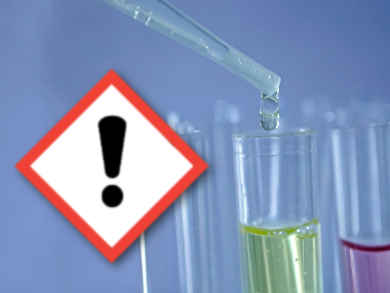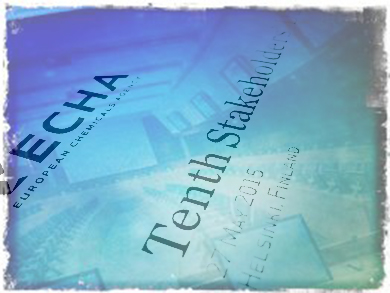Europe’s citizens want safer chemicals in their daily lives. They also want animal testing to be used only as a last resort. Unfortunately, science has not yet progessed to a stage where animal test methods can be completely replaced by alternatives.
In our work at the European Chemicals Agency (ECHA), we see the need for new non-animal approaches to assess the hazards of chemicals. Recently, the fields of biology and toxicology have seen a number of important developments towards this goal. To take advantage of these advances, we at ECHA want to communicate our needs to the research community through clear problem formulation. The ECHA Regulatory Science Strategy guides us on how to do so.
How Can Science Help?
Compared to the time when current hazard assessment systems (e.g. Europe’s REACH Regulation) were developed, we now get much more information from genomics, bioinformatics, and high-throughput screening that may be useful for the risk assessment of chemicals. However, these non-animal approaches by themselves cannot yet replace animal studies like those for carcinogenicity or reproductive toxicity.
Fortunately, fundamental toxicological understanding of events at the molecular level has increased enormously and knowledge in areas such as toxicokinetics is growing. Combined with advances in computational methods, such as models based on modes of action, we can envision our regulatory needs being satisfied by a combination of “big data” with “smart integration” as described below.
There are two research programmes from both sides of the Atlantic: USA’s Tox21 and Europe’s SEURAT-1. Tox21 has tested thousands of chemicals using a battery of in vitro high-throughput screening assays. This “big data” approach helps prioritize chemicals. To complement this, SEURAT-1 is developing a robust mechanistically-driven data integration approach for chemical safety evaluation. Such smart integration means drawing predictive conclusions from the data while keeping the uncertainties to a minimum.
Discussing New Approaches
We want to challenge the scientific community to develop approaches that rationally integrate different lines of evidence to give an overall weight-of-evidence prediction. In April 2016, ECHA’s scientific workshop on new approach methodologies inspired by Tox21 and SEURAT-1 will provide a platform for academia and regulators to discuss how to move forward in solving the regulatory challenges. This may be by coming up with ideas for better approaches that can be adopted in the short term, or the discussions might help steer R&D by communicating the regulatory challenges.
There are two purposes in regulatory hazard assessment, each with its own level of tolerated uncertainty: One is assessing a specific chemical’s hazards and risks. The other is screening a large set of substances to prioritize groups with particular characteristics for further regulatory action. For the latter, the level of uncertainty can be (much) higher than for the former. In the workshop, we will discuss a number of examples, collected from different parts of the world.
Challenges
The biggest challenge is to convert the new knowledge and the growing set of mechanistic data into easy-to-use tools for regulatory purposes. We hope that a common understanding on these new methodologies will be found, in the context of both definite risk assessment and screening/prioritization. It then hopefully will become clear what has to be done to develop them further along the path for safer chemicals with less animal testing.
Authors
Kaihsu Tai and Tomasz Sobański, European Chemicals Agency (ECHA), Helsinki, Finland
(The views expressed in this paper are solely those of the authors and the content of the paper does not represent the views or position of the European Chemicals Agency.)
- European Chemicals Agency (ECHA), Helsinki, Finland
- Topical Scientific Workshop – New Approach Methodologies in Regulatory Science
19-20 April 2016, Helsinki, Finland
Live Webcast on Tuesday 19 April 2016 at 09.30 EEST - Chemicals Safety and Regulations,
ChemViews Mag. 2015.
A topical look back on the best of ChemistryViews.org to celebrate the 5th anniversary of the news and information service




